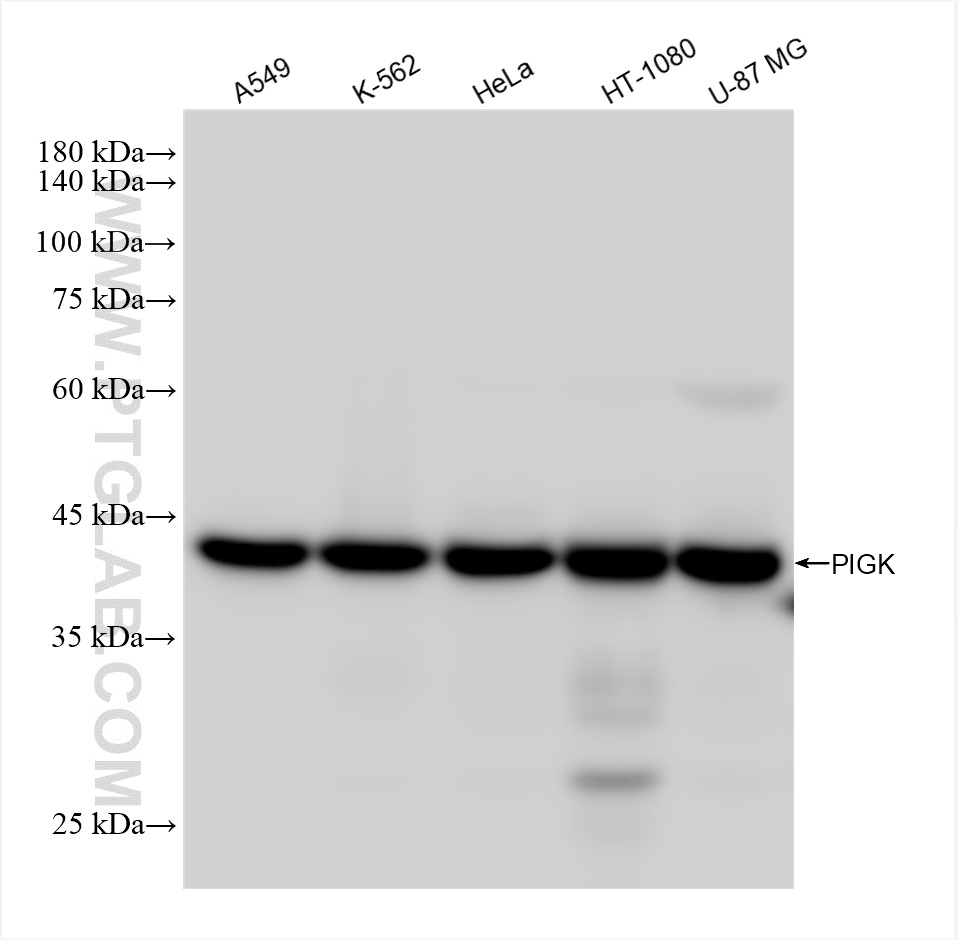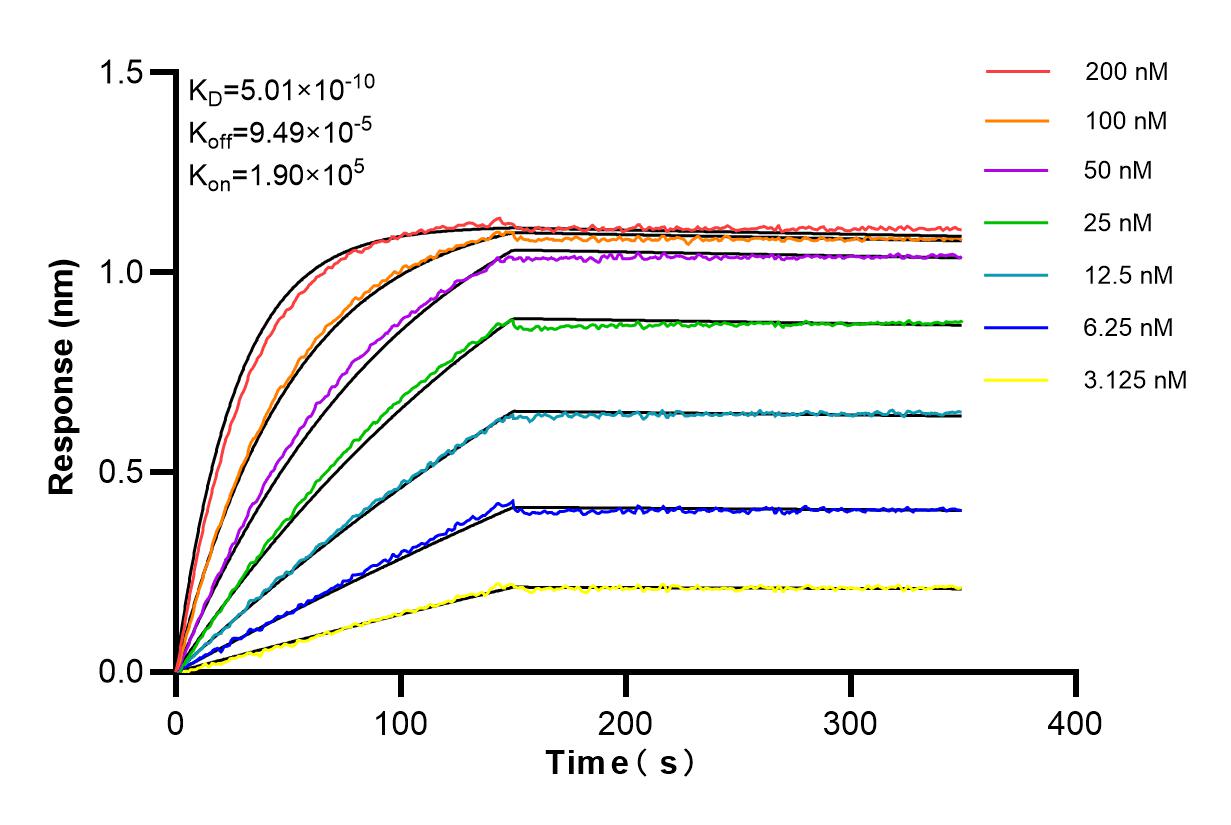验证数据展示
经过测试的应用
| Positive WB detected in | A549 cells, K-562 cells, HeLa cells, HT-1080 cells, U-87 MG cells |
推荐稀释比
| 应用 | 推荐稀释比 |
|---|---|
| Western Blot (WB) | WB : 1:5000-1:50000 |
| It is recommended that this reagent should be titrated in each testing system to obtain optimal results. | |
| Sample-dependent, Check data in validation data gallery. | |
产品信息
84568-3-RR targets PIGK in WB, ELISA applications and shows reactivity with human samples.
| 经测试应用 | WB, ELISA Application Description |
| 经测试反应性 | human |
| 免疫原 | PIGK fusion protein Ag3497 种属同源性预测 |
| 宿主/亚型 | Rabbit / IgG |
| 抗体类别 | Recombinant |
| 产品类型 | Antibody |
| 全称 | phosphatidylinositol glycan anchor biosynthesis, class K |
| 别名 | hGPI8, GPI-anchor transamidase, GPI8, GPI transamidase, EC:3.-.-.- |
| 计算分子量 | 45 kDa |
| 观测分子量 | 40-45 kDa |
| GenBank蛋白编号 | BC026186 |
| 基因名称 | PIGK |
| Gene ID (NCBI) | 10026 |
| RRID | AB_3672072 |
| 偶联类型 | Unconjugated |
| 形式 | Liquid |
| 纯化方式 | Protein A purfication |
| UNIPROT ID | Q92643 |
| 储存缓冲液 | PBS with 0.02% sodium azide and 50% glycerol , pH 7.3 |
| 储存条件 | Store at -20°C. Stable for one year after shipment. Aliquoting is unnecessary for -20oC storage. |
背景介绍
Phosphatidylinositol glycan, class K (PIGK), is a crucial member of the glycosyl-phosphatidylinositol transamidase (GPIT) protein complex that attaches a diverse group of macromolecules to the plasma membrane of eukaryotes. The human PIGK gene is involved in the key step of transferring GPI-anchor to the respective protein molecules in the plasma membrane (PMID: 22824918). Endogenous PIGK has 2 isoforms, 45 kDa and 36 kDa (PMID: 34193731).
实验方案
| Product Specific Protocols | |
|---|---|
| WB protocol for PIGK antibody 84568-3-RR | Download protocol |
| Standard Protocols | |
|---|---|
| Click here to view our Standard Protocols |

